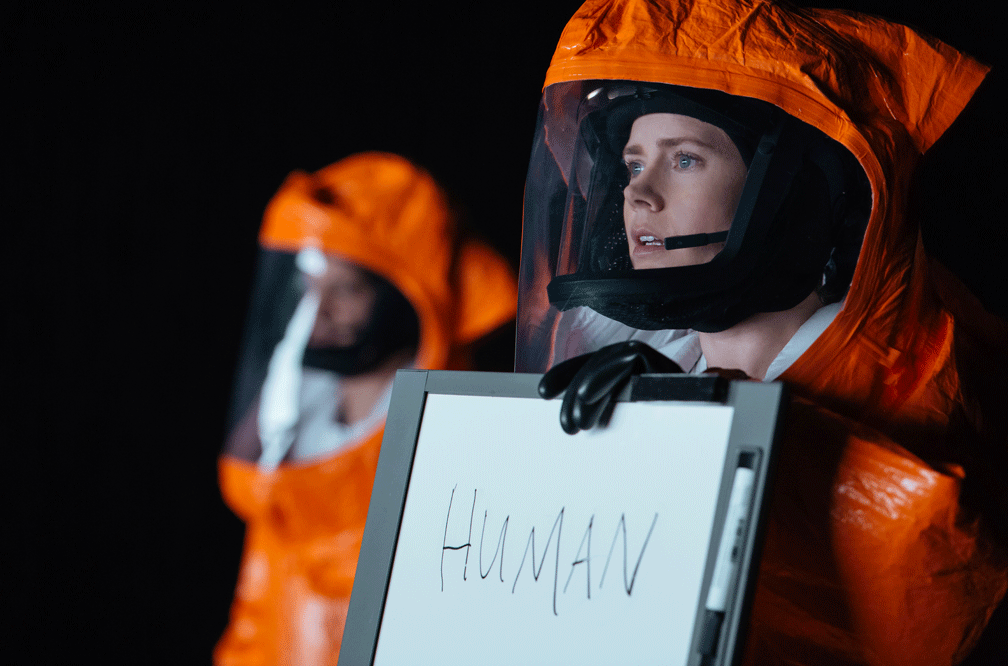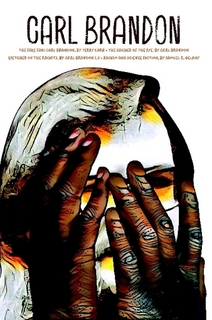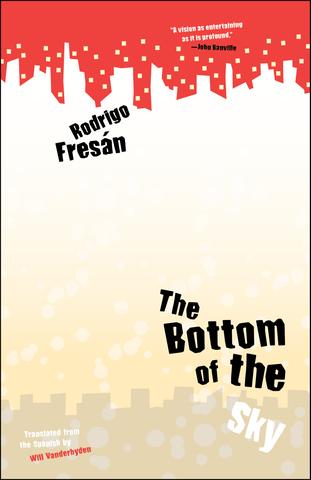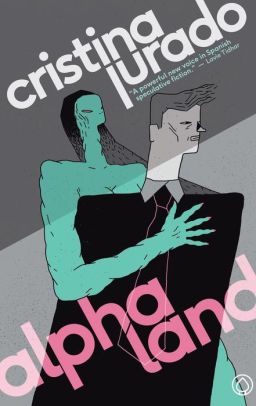(1) CALL FOR SUBMISSIONS. Christopher J. Garcia and Chuck Serface are co-editing an issue of The Drink Tank dedicated to science-fiction comics of the 1950s and 1960s! Any critical articles, fanfic, personal remembrances, artwork, and any media we can publish in a fanzine are welcome.
Chuck Serface says, “Consideration of materials from any comic publisher of the time is fair game: Atlas/Marvel, DC, Gold Key, Charlton, Warren, EC, ones I’m forgetting at the moment — all of them.”
The deadline’s October 14, 2019. They’ll have it out by the end of the calendar year. Send submissions to [email protected].
(2) COLSON WHITEHEAD Q&A. His new book is not sff, but some of his answers are about genre in “Powell’s Interview: Colson Whitehead, Author of ‘The Nickel Boys’”.
Rhianna: You’ve mentioned in other interviews being an avid reader of horror, and your novel Zone One is a zombie horror story. You’re very skilled at depicting violence. I was wondering if the horror genre has stylistically influenced the way that you depict historical atrocities, like those in The Underground Railroad and The Nickel Boys.
Whitehead: Again, I think the story determines how you tell it. The violence in Zone One is gorier. It’s more flamboyant than some of the stuff in The Underground Railroad and The Nickel Boys. In those two books, I think the horrific brutality that they experience speaks for itself. They don’t have to be dramatized.
This kind of language, I borrowed from reading the slave narratives. You don’t have to dramatize or sell to the listener or the reader how terrible everything is that is happening because it speaks for itself. If the violence is speaking for itself, I can concentrate more on the characters and what they’re feeling.
(3) TOLD WITH CONVICTION. LAist tells how “This LA Writer Turned Comic-Con Into A Crime Story”.
San Diego’s Comic-Con International starts Wednesday night, which makes this the perfect time to talk about Bad Weekend, a noir set against the backdrop of a fictionalized version of the now famous comics convention.
Writer Ed Brubaker described the graphic novel — with art by Brubaker’s longtime collaborator Sean Phillips and colors by Phillips’ son Jacob — as a weird love letter to comics, being a fan, and the strangeness of the comic book industry.
…Bad Weekend is the product of filing away stories he’s heard around the comic book industry for the past 20 to 30 years, according to Brubaker — stories of who screwed over whom, of success not bringing happiness, and of comic companies getting rich off their work with movies and TV shows without the creators sharing in that wealth.
(4) OP-EDS. [Item by Olav Rokne.] If, like me, you’ve been enjoying the New
York Times’ series of science fictional op-eds, they’ve just created a landing
page with all the articles in the series now organized in one place: “Op-Eds
From the Future”
It’s worth checking back every second Monday to
see the latest installment, as they’ve been excellent so far.
(5) FILER NAMED FGOH. Chris Barkley shared on Facebook: “I am pleased to report that I was asked and accepted to be the Fan GoH at the 2021 Astronomicon in Rochester, NY along with my good friend (and Identical twin) Robert J. Sawyer.”
(6) TRANSLATED NOVEL HUGO REDUX. Chris Barkley has also addressed criticism of the Best Translated Novel Hugo category in a Facebook post which begins —
I have taken this past week to ponder a response to Neil Clarke and Taiyo Fujii’s objections to the viability of a Hugo Award category for Best Translated Novel. And frankly, their objections puzzle me.
I ask this of Mr. Fujii and to Mr. Clarke; if the three Hugos awarded to translated works are the awakening of fandom to translated literature, why haven’t more of those works been nominated in their wake? In the past three years of nominations; only 2017’s Death’s End, by Cixin Liu, translated by Ken Liu, has been included in the Best Novel category, all of the other nominees in the category have all been decidedly anglocentric.
The truth of the matter we think that the Worldcon and the Hugo Awards have been overwhelmingly perceived for quite a while as an English speakers only party since a majority of the conventions have been held in the United States, Canada, the United Kingdom and Australia.
Mr. Clarke and Mr. Fujii may see the proposed award as either unnecessary, pandering or condescending to authors and fans but all Ms. Cordasco, my co-sponsors and I only want to do is shine a spotlight to fervently call attention to and honor authors and their translators. Speaking for myself, had there been three, four or five nominees on the final ballot since those historic awards, I would not have contemplated initiating and offering this proposal for an open debate…
(7) JUDGE UNCONVINCED. “Marvel Finally Beats a Lawsuit Over the ‘Iron Man 3’ Poster” – The Hollywood Reporter has the story. There does seem to be a family resemblance, just the same:

Horizon still could have gotten the case to trial, but it then needed to show an inference of copying through the similarity of the works. Specifically, Horizon argued the two works were “strikingly similar,” with reliance on an expert report discussing anatomical structures, faces and heads, and camera views.
The judge responds that the expert report is “equivocating” on some of the noteworthy similarities by addressing features on careful viewing and not going quite so far to rule out any reasonable possibility of independent creation. Plus, the judge adds, “there remain enough differences between the two works,” nodding to Marvel’s pointing out differences in pose, differing placement of blue lights, and significantly different overall coloring.
(8) SEE READERCON 30. Ellen Datlow has posted 89 photos taken at ReaderCon 30 in a Flickr album.
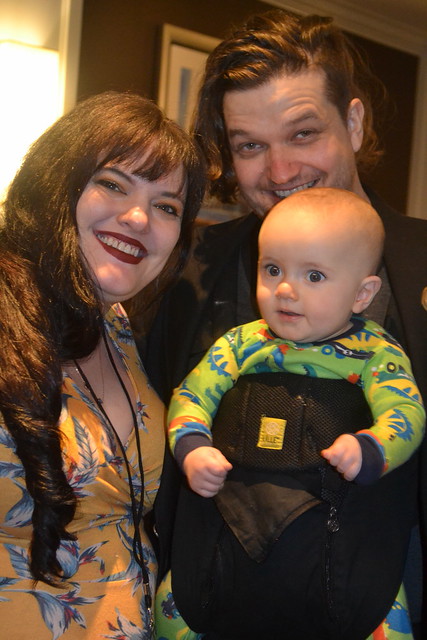
(9) ARE YOU WHAT YOU CONSUME? Surprising no one, here’s where The Hollywood Reporter lands on the meaning of “fan” and “fandom” — “Among Fandoms, Marvel May Reign Supreme, Poll Finds”.
A nationally representative sample of 2,200 adults carried out between July 8 and 10 revealed that, when it comes to genre properties, Marvel is far and away the most successful, with 63 percent of those surveyed considering themselves fans. The next most popular property was Marvel’s Disney sibling, Star Wars, with a 60 percent fandom, and DC followed with 59 percent.
(10) TODAY IN HISTORY.
- July 17, 1955 — Disneyland Park opened in Anaheim, California.
- July 17, 1987 — Robocop premiered on this day.
(11) TODAY’S BIRTHDAYS.
[Compiled by Cat Eldridge.]
- Born July 17, 1858 — Florence Balcombe Stoker. She was the wife and literary executor of Bram Stoker. She’s best remembered for her extended legal dispute with the makers of Nosferatu, an unauthorized film blatantly based on her husband’s novel Dracula. (Died 1937.)
- Born July 17, 1889 — Erle Stanley Gardner. Though best known for the Perry Mason series of detective stories, he did write a handful of SF stories, all of which are collected in The Human Zero: The Science Fiction Stories of Erle Stanley Gardner. (Died 1970.)
- Born July 17, 1944 — Thomas A. Easton, 75. SF critic and author who wrote the book review column in Analog from 1979 – 2009. His Organic Future series is quite entertaining and I’m reasonably certain I read Sparrowhawk when it was serialized in Analog.
- Born July 17, 1952 — Robert R. McCammon, 67. Horror writer whose Michael Gallatin books, The Wolf’s Hour and The Hunter from the Woods, Alllied WWII werewolf agent and his adventures, I strongly recommend. His “Nightcrawlers” short story was adapted into an episode of the Twilight Zone.
- Born July 17, 1954 — J. Michael Straczynski, 65. Best known rather obviously for creating and writing most of Babylon 5 and its short-lived sequel Crusade. He’s also responsible for as well as the Jeremiah and Sense8 series. On the commit sides, he’s written The Amazing Spider-Man, Thor and Fantastic Four. Over at DC, he did the Superman: Earth One trilogy of graphic novels, and has also written Superman, Wonder Woman, and Before Watchmen titles.
- Born July 17, 1967 — Kelly Robson, 52. I just got done reading her brilliant “Gods, Monsters and the Lucky Peach”. Right now, it appears only this plus “A Human Stain” and “Waters of Versailles” are available on iBooks and Kindle for reading as she has no collection out yet. And no novel as far as I can tell.
- Born July 17, 1971 — Cory Doctorow, 48. I’ll admit that I’ve mixed feelings about his work. I enjoyed Down and Out in the Magic Kingdom, his first novel, and thought The Rapture of the Nerds had potential but really failed to live to that potential to great. Everything else is ‘Meh’. His activism is oft times that of an overeager puppy trying to get attention for himself.
- Born July 17, 1976 — Brian K. Vaughan, 43. Wow. Author of Ex Machina, Pride of Baghdad, Runaways, Saga, Y: The Last Man, and his newest affair, Paper Girls. And yes, he’s won Hugo Awards. You could spend an entire summer just reading those series. In his spare time, he was a writer, story editor and producer of the television series Lost during seasons three through five. And was the showrunner and executive producer of the Under the Dome series.
(12) IN THE BEGINNING. The San Diego Union-Tribune explores “50 Shades of Comic-Con: What we’ve gained and lost in five decades of pop culture celebrations”.
From its inception, Comic-Con had intergalactic ambitions.
The initial show, then called San Diego’ Golden State Comic Con, featured science fiction writers Ray Bradbury and A.E. Van Vogt; Jack Kirby, creator of Captain America, X-Men and other iconic superheroes; vintage films; an art auction; and dozens of dealers peddling mountains of new and used comics.
An unforgettable event — for the 300 attendees. Few others noticed and even they dismissed this as a juvenile jamboree. For instance:
On the show’s first day, Aug. 1, 1970, the author of “Fahrenheit 451″ and “The Martian Chronicles” granted an interview to The San Diego Union. Yet Bradbury’s spirited defense of comics was buried on page B-11, under articles about a flower show, the repainting of the White House East Room and a medical brief with the headline “Fat Men More Tipsy.”
… Neil Kendricks is a writer, filmmaker and teacher who recently led a San Diego State course on comics and sequential art. In the early 1980s, though, he was a high school student at his first Comic-Con. In the dealer’s room, he bumped into a white-haired gentleman flipping through the cardboard boxes full of used comics.
“Mr. Bradbury,” he stammered, “will you be here for awhile?”
When Ray Bradbury nodded yes, Kendricks dashed out of Golden Hall and ran the half-mile to Wahrenbrock’s Book House.
“I went upstairs to the science fiction section and bought as many of his books and I could find. Then I ran all the way back and he signed them. That,” Kendricks said, “could never happen now.”
(13) UP ON CHARGES. Trae Dorn reports at Nerd & Tie that a conrunner is being prosecuted in the Twin Cities: “How to React When a Member of Your Con Staff is Accused of Rape”. Documentation accompanies the post.
On Monday it came to light that long time staffer of Twin Cities based Anime Detour Stephen Gifford has been charged with third-degree sexual assault in Hennepin County, Minnesota. Gifford was head of Convention Communications for Anime Detour’s 2019 event earlier this year, and has previously served as the event’s convention chair.
… Now we’ve seen cons react to situations like this in many ways, but thankfully Anime Detour’s staff has taken the situation seriously.
(14) KNIT ONE, PEARL TWO. While they still can, WIRED lets readers decide for themselves what to think about this coming technology: “Here’s How Elon Musk Plans to Stitch a Computer into Your Brain”.
…At a presentation at the California Academy of Sciences, hastily announced via Twitter and beginning a half hour late, Musk presented the first product from his company Neuralink. It’s a tiny computer chip attached to ultrafine, electrode-studded wires, stitched into living brains by a clever robot. And depending on which part of the two-hour presentation you caught, it’s either a state-of-the-art tool for understanding the brain, a clinical advance for people with neurological disorders, or the next step in human evolution.
The chip is custom-built to receive and process the electrical action potentials—“spikes”—that signal activity in the interconnected neurons that make up the brain. The wires embed into brain tissue and receive those spikes. And the robotic sewing machine places those wires with enviable precision, a “neural lace” straight out of science fiction that dodges the delicate blood vessels spreading across the brain’s surface like ivy.
…And, sure, there’s more. A public records request from WIRED in April 2019 found that Neuralink is licensed to have hundreds of rats and mice in its research facilities. In a seemingly unplanned moment at the Cal Academy, Musk also acknowledged that Neuralink’s research had progressed beyond rodents to non-human primates. It’s only because of a records request filed by Gizmodo that Neuralink’s affiliation with the primate research center at UC Davis is public knowledge. That affiliation has apparently progressed: “A monkey has been able to control a computer with its brain, just FYI,” Musk said during the Q and A after the presentation.
His team seemed as surprised and discombobulated by the announcement as the audience. “I didn’t know we were running that result today, but there it goes,” said Max Hodak, president of the company, on stage next to Musk. (Monkeys have controlled computers via BCIs before, though presumably this would be the first time one used Neuralink.)
(15) APOLLO 11 AT 50 CLIPPINGS.
- “For Apollo 11’s 50th Anniversary, The Washington Monument Becomes A Rocket” at NPR with lots of photos.
One small holograph for man, one giant holograph for the Washington Monument.
The Smithsonian National Air and Space Museum will celebrate the 50th anniversary of the Apollo 11 moon landing with a life-size projection of the Saturn V rocket on the Washington Monument on Tuesday, Wednesday and Thursday.
The Saturn V rocket is now iconic for carrying the Apollo 11 crew to the moon in 1969. The projection-mapping artwork will occupy 363 of the monument’s 555 vertical feet.
As the 17th century’s most famous Italian astronomer surveyed the heavens, he likely never dreamed a rocket shooting fire would one day power people up among the stars he eyed through his telescope, or that his work would help guide a ship to the moon.
But Galileo Galilei’s observations would become a key link in the chain of scientific research and discovery fundamental to our understanding of the universe and our drive to explore it.
That scientific continuum is at the heart of a new Houghton Library exhibit connecting early celestial calculations to the Apollo 11 mission that put two American astronauts on the lunar surface 50 years ago this July. “Small Steps, Giant Leaps: Apollo 11 at Fifty” features gems from Harvard’s collection of rare books and manuscripts as well as NASA artifacts from an anonymous lender and Harvard alumnus, many of which were aboard the spaceship that left Earth’s orbit in 1969.
Not all of the equipment carried into space was cutting edge and expensive. Some of the more humble odds and ends even prevented disaster.
…25: Length of duct tape rolls carried to the Moon, in feet
If there’s one saviour time and again of American space missions over the past 50 years, it’s a roll of duct tape. During Apollo missions, it was used for everything from taping down switches and attaching equipment inside the spacecraft, to fixing a tear on a spacesuit and, during Apollo 17, a fender on the lunar rover.
One of the surviving crew members of the first manned mission to the Moon – Apollo 11 – has returned to the site where the mission set off 50 years ago.
Michael Collins, 88, visited Florida’s Kennedy Space Center on Tuesday. He marked theprecise time – 09:32 (13:32 GMT) – when their rocket took off.
Mr Collins had stayed in lunar orbit while his colleagues Neil Armstrong and Buzz Aldrin walked on the Moon.
…Mr Collins described how he felt during take-off.
“The shockwave from the rocket power hits you,” he told Nasa TV. “Your whole body is shaking. This gives you an entirely… different concept of what power really means.”
- “Ayn Rand, Leonard Nimoy, and Muhammad Ali told Neil Armstrong what to say as he stepped on the Moon”: FastCompany.
…Esquire was not expecting much from Neil Armstrong.
“While the space program is poised on the brink of a truly epoch-making triumph of engineering, it is also headed for a rhetorical train wreck,” the story said.
“The principal danger is not that we will lose the life of an astronaut on the Moon, but that the astronauts will murder English up there . . . . That they are likely to litter the intergalactic void with gibberish and twaddle.”
The smugness is rather remarkable, because despite the talent of the people it enlisted, Esquire got not a single decent line from any of them.
It got, in fact, a lot of gibberish and twaddle.
…With that as your benchmark, here’s a sampling of what Esquire’s best and brightest came up with:
John Kenneth Galbraith, the Harvard economist: “We will hafta pave the damn thing.”
Ayn Rand, libertarian thinker and novelist: “What hath man wrought!”
…Leonard Nimoy, the actor, then in his third season as Spock on the new TV series Star Trek: “I’d say to Earth, from here you are a peaceful, beautiful ball and I only wish everyone could see it with that perspective and unity.”
(16) BACK SEAT FLYING. [Item by Mike Kennedy.] Washington Post: “Airline tweets about where passengers are least likely to die in a crash”. The pic below is cribbed from the WaPo article. Apparently, they got ahold of a screenshot of the since-deleted tweet. The thought process of whoever sent this out must have been, well, let’s just call it astounding.

(17) A KING WILL BE CROWNED. Looper fills us in about The Most Anticipated Sci Fi Movies Of 2020.
2020 might feel far away, but Hollywood’s major studios are already planning ahead with some legit super hits on the horizon. And if you’re a fan of sci-fi flicks, then 2020’s looking like an especially good year for you. These are just a few of the most anticipated sci-fi blockbusters on their way to a big screen near you. Film fans will finally get the answer to an age-old question in 2020, when Godzilla and King Kong face off on the big screen. Director Adam Wingard has already assured fans that his take on the two monsters will crown a definitive winner, unlike the 1962 film that first pit the two characters against each other. This will be the fourth entry in Legendary’s MonsterVerse, first established in 2014’s Godzilla and further explored in Kong: Skull Island.
[Thanks to Olav Rokne, Mike Kennedy, Cat Eldridge, JJ, Chip Hitchcock, Martin Morse Wooster, Michael Toman, John King Tarpinian, Carl Slaughter, and Andrew Porter for some of these stories. Title credit goes to File 770 contributing editor of the day Jack Lint.]

